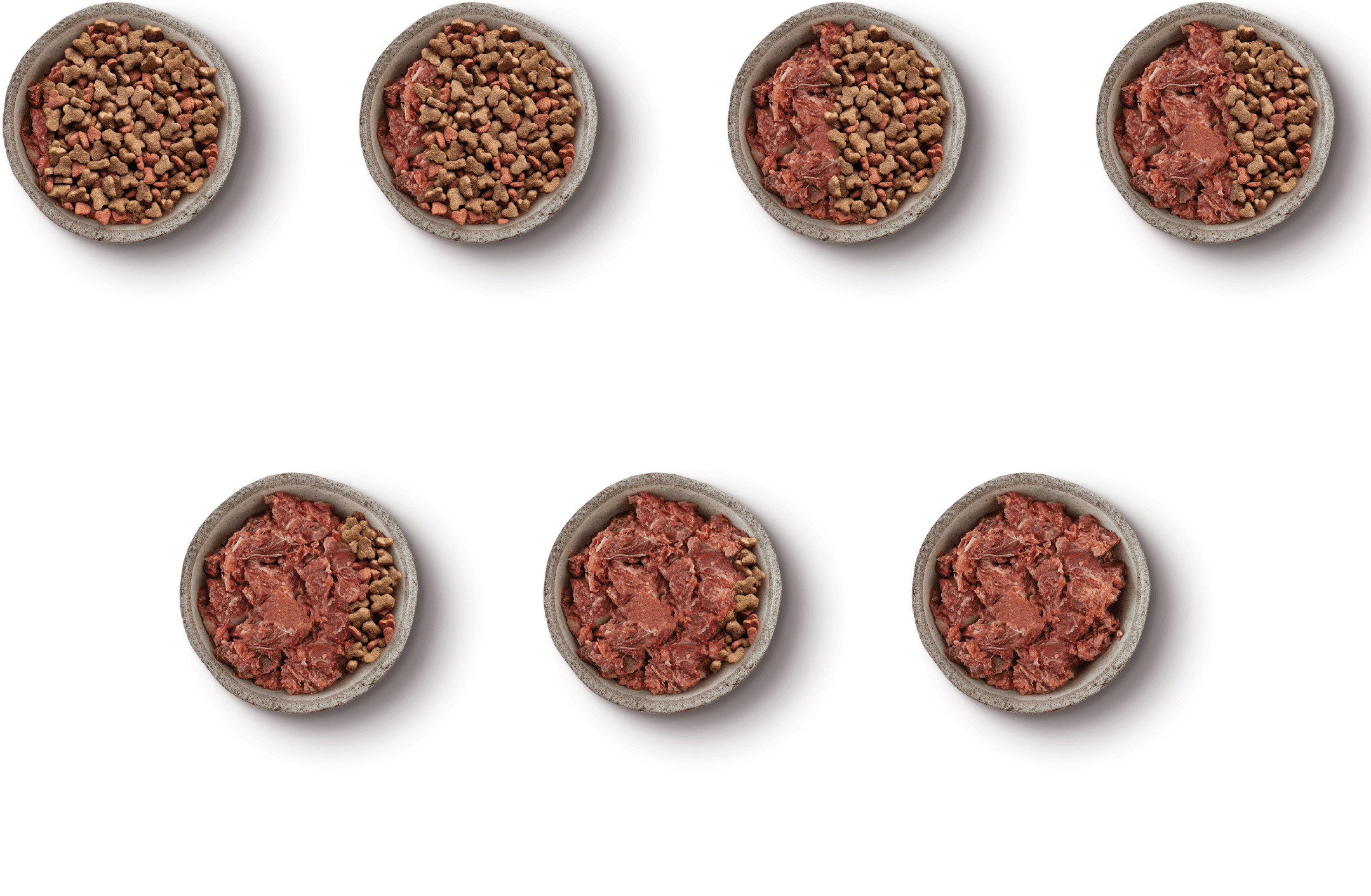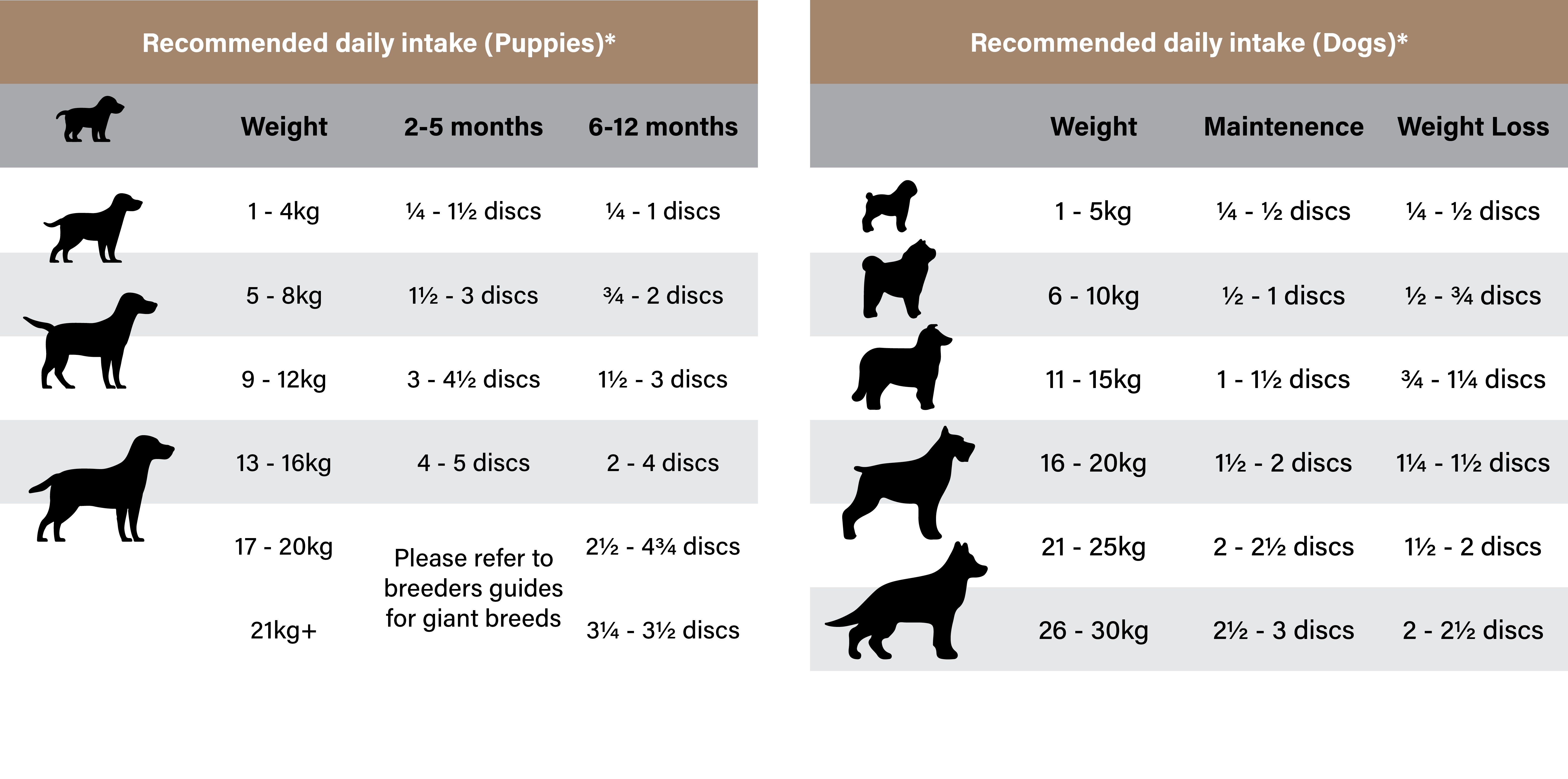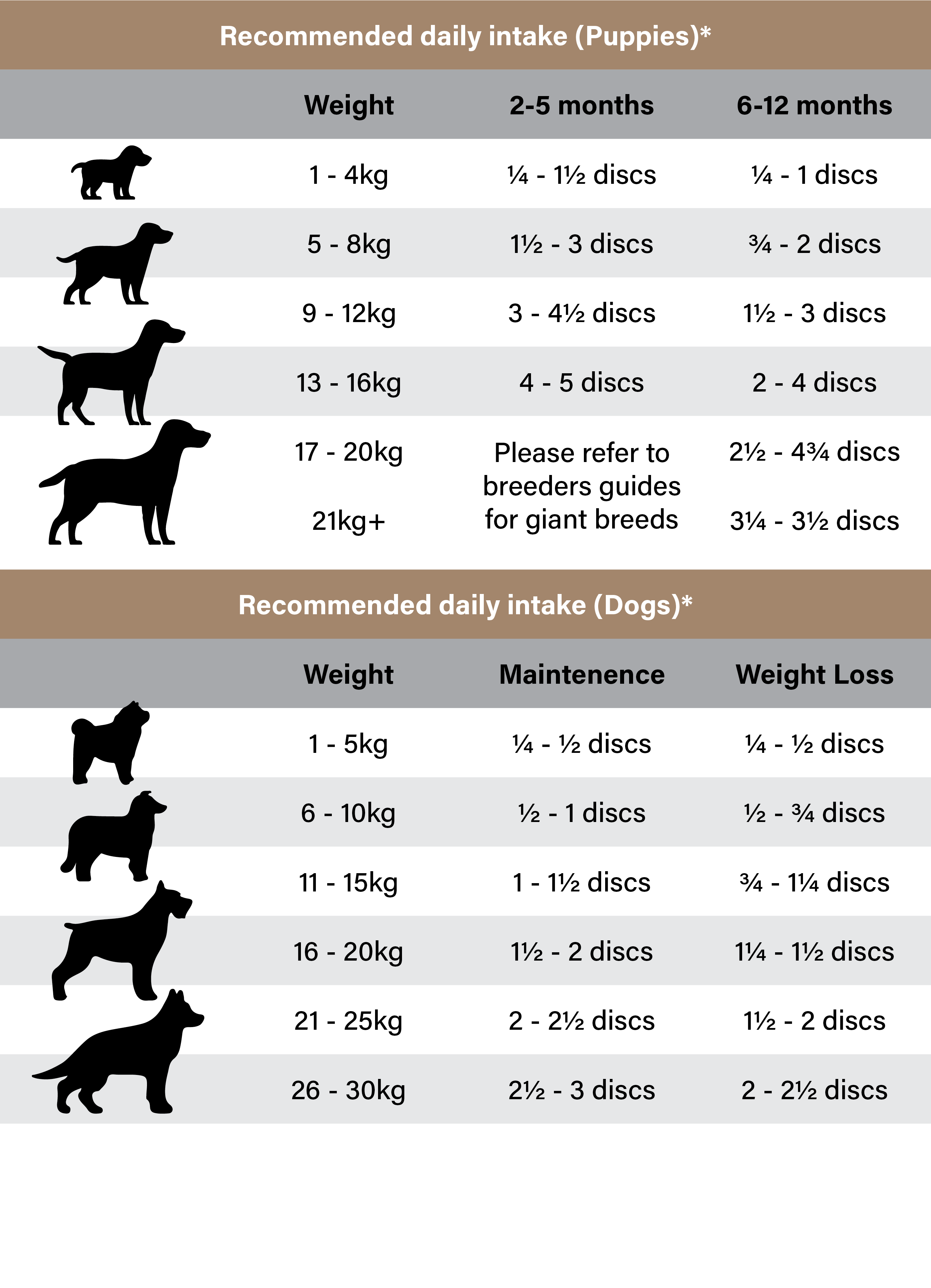FOOD CALCULATOR




































































































































If you’re wondering how we manage to keep your food safe during delivery, or how to best make the switch, you’ve come to the right place.
Each raw food disc is a 250g frozen meal. They look like a hockey puck. “Free flow” means they are snap frozen separately, so they don't stick together in the bag, making them easy to serve. The vegetable and fruit varieties are 150g discs.
Our butchers weigh and prepare the meat, organs, vegetables and superfoods, removing excess fat and bone. They place all the ingredients onto a big mixing machine which produces a chunky blend. Because we have nothing to hide and we like you to see the quality of the ingredients we use, we don't mince the mixture into a fine mush. This chunky mixture is frozen and hand cut into 250g discs.
Our varieties are made in small batches, in a HACCP approved human food production facility.
It’s much more work to produce the food in frozen discs, but we believe the benefits to the customer are worth it. It keeps the meals in manageable individual portions, without the need to wrap each one. And it takes the guesswork out of how much you are feeding.
Because our food is frozen, we don't need to use chemical or non thermal pasteurisation processes to preserve it. We don't use HPP or High Pressure Processing which uses extremely high pressure to lengthen the shelf life of food, but in the process denatures the proteins. The raw unfrozen pet foods you see at the supermarket with a long shelf life, usually undergo this process.
The convenience of our 250g meal portions (discs) is one of the things our customers say they really like. They don't need to thaw out a large amount of food at a time, there is no wastage. We’re mindful of using as little packaging as possible, so we don't individually wrap each portion. Simply remove what you need from our resealable bag and return to the freezer.
We also have Sealed Storage Bowls to help thaw out potions in the fridge.
If you’re new to raw feeding, we’ve made it easy by building a range of combo boxes. However if you know what your dog likes and want to create your own diet, you can Build a Box on your own.
By feeding a variety of meats alongside the vegetable and fruit supplements, your dog will have a nutritionally balanced diet. Variety also helps stop your dog from getting bored or fussy.
Transitioning to raw dog food is easy, but a gradual transition is an important element in changing to a raw diet.
We suggest you start by mixing your existing food with a portion of our raw food. Over a period of 7-10 days, gradually decrease the kibble and increase the raw portion.
Start with the milder chicken or turkey varieties and stay with these until your dog's poop is well formed. Then gradually introduce new proteins. If your dog is a little fussy, then try mixing the existing variety with some of the new variety.
Try following this plan:


Most dogs make the switch easily; however, some may get an upset tummy for a day or two.
The following products help with a smooth transition:
Please see our range of Apothecary products to assist your dog’s transition to raw feeding.
Adult Dog: A general rule for an adult dog is to calculate 2.5% of your Adult dog's weight and feed this amount daily. You may want to split this over two meals.
For example: Feed a 10kg dog one disc daily (250g)
Puppy: Puppies need considerably higher as they are growing and developing. Feed between 6-9% of your puppy's current body weight, spread over several meals per day ( depending on their age)
For example: Feed a 10kg puppy aged 2-4 months old 4 discs per day (1kg).


We have a Food Calculator on our website to get an exact portion.
You must consider your dog’s current weight, age and activity levels as they will have a part to play in how much they should be consuming.
You are the best judge of your dog’s health and vitality:
Yes. Our Vegetable and Fruit Supplement provides an important balance of vitamins, minerals and nutrients in your dog's diet. It adds essential fiber, vitamins, minerals, phytonutrients, and living active enzymes for good gut health.
You should feed as many different proteins as possible. Like a good marriage, variety is the spice of life and will help your dog keep their diet balanced and interesting over time. And they’ll love you for it.
As with humans each and every meal does not need to be completely balanced. However, feeding a variety of protein sources is a key factor in feeding a raw food diet. Some pets are limited through allergies to certain proteins. Kangaroo is a great choice for dogs with allergies.
If you don’t feed raw meaty bones, your dog is missing out on some of the benefits of raw feeding such as clean teeth, fresher breath and a great source of enrichment and entertainment. Remember this is what dogs were designed to do - chew and gnaw.
Balancing the Calcium and Phosphorous is an important part of feeding the raw diet. If your dog loves chicken necks or wings, these are a great source of additional calcium.
Read practical tips and hints on how to include bones in your dog's diet by reading our blog post ‘Bones and Dental Health’ by our Pet Nutritionist Clare Kearney.
Caution:Do not feed large weight bearing bones as these can result in damaged teeth if your dog is a vigorous determined chewer. Bones that have been cut vertically can splinter and should not be fed.
No never. Cooked bones are brittle and may splinter and cause a choking hazard.
Vets get limited nutritional training whilst studying. Once qualified and working in a vet practice, pet food manufacturers who want vets to resell their pet food in their waiting rooms provide the main source of training. There are many myths and misconceptions about feeding dogs a raw diet. These are covered in our blog post ‘Common myths around feeding raw food to your dog’ by our Pet Nutritionist Clare Kearney.
Raw meat is a species appropriate diet for dogs, just like gum leaves are for Koalas. These species can’t survive being fed a diet they haven’t evolved to eat. Dogs are designed to eat meat and while they are very adaptive and can eat other foods, they don't thrive and stay healthy long term.
All our ingredients are human grade. All meat, organs and bones come from the same place your local butchers sources his ingredients. Meat that is destined for human consumption or export undergoes very strict inspection, health and safety practices which is why we ONLY use human grade - never pet grade or rendered meats.
The stomach acid has a PH of 1-2, very acidic, killing any bacteria present. Their digestion of meat is very quick, so any bacteria will not get a chance to take hold. Handle your dog's meat meals just as you would your own meat. Keep it frozen and thaw in the refrigerator. Maintain healthy food handling practices, wash their bowls and dishes after feeding. Wash your hands before and after handling meat. It really is just common sense.
Meat by nature is about 60% moisture so it is natural your dog will not be desperately trying to quench their thirst as it would after eating a bowl of dry kibble. This also means the chance of kidney and bladder problems will be reduced, as your pet will be flushing out their systems with the water that is naturally in their food. Kibble fed dogs need to drink a lot more water just to process their food.







